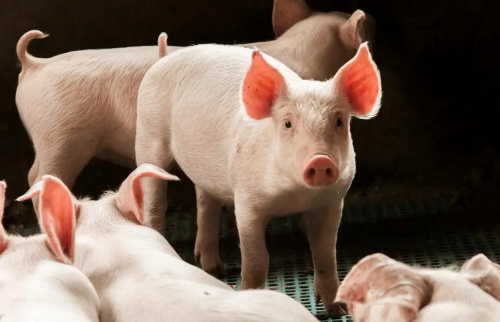Ultrasound devices are essential for monitoring pregnancy in pigs and ensuring efficient farm management. อย่างไรก็ตาม, even small operational mistakes can lead to inaccurate results, ultimately affecting critical decisions. Below, we explore five common mistakes beginners make and how to avoid them.

Mistake 1: Incorrect Probe Placement
New users often place the probe in the wrong position on the sow’s abdomen. For early pregnancy detection (approximately 24–35 days after mating), the probe should be placed near the third-last teat. As the pregnancy progresses, the uterus shifts forward, requiring the probe to be moved toward the rib area. Failing to adjust the probe position based on the pregnancy stage can result in missing key structures such as the bladder or embryonic fluid, leading to misdiagnosis.

Ultrasound probe placed above the second to third teat
Mistake 2: Skipping Coupling Gel
Coupling gel is crucial for ensuring smooth contact between the probe and the skin. Without it, air pockets can form, resulting in blurry images or incorrect readings. Some beginners apply too little gel or substitute it with water, which evaporates quickly. A thick, even layer of coupling gel ensures clear sound wave transmission and reduces interference. Always check the gel’s quality and reapply if the sow moves during scanning.
Mistake 3: Ignoring Parameter Adjustments
Ultrasound settings—such as gain and frequency—should be customized based on the sow’s size and abdominal thickness. Larger sows require higher gain to penetrate deeper tissues, while smaller sows need lower settings to avoid overexposed images. Beginners often stick with the default settings, which can result in visuals that are either too dark or washed out. Take time to adjust the parameters for each sow to achieve accurate and detailed results.
Mistake 4: Neglecting Sow Comfort
Rough handling can stress the sow, making her restless or resistant. A stressed animal may contract abdominal muscles, distorting the ultrasound image. Beginners sometimes rush the process, press too hard with the probe, or forget to calm the sow. Simple steps—like offering feed or waiting for the sow to urinate (a full bladder can obstruct the view)—can help create a relaxed environment, leading to smoother scans.

Pig Pregnancy Test Using Ultrasound
Mistake 5: Forgetting to Preheat the Device
Ultrasound machines, especially in cooler environments, need a few minutes to warm up. Skipping this step can lead to grainy or unstable images, as the internal components aren’t yet optimized for operation. Beginners may turn on the device and start scanning right away, unaware that a short warm-up time can stabilize the system and improve image clarity.
By paying attention to these details, beginners can significantly enhance the accuracy of ultrasound scanning. Brands like BXL offer user-friendly devices and technical support to make the learning curve smoother. Remember, in modern pig farming, practice and patience are key to mastering this valuable tool.
